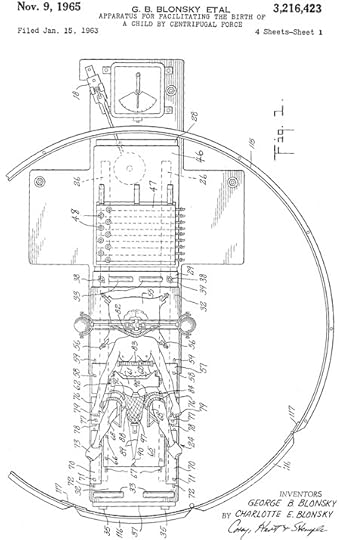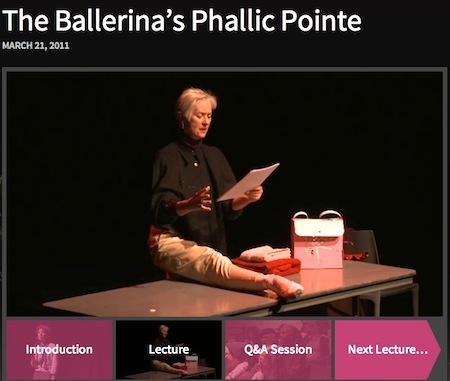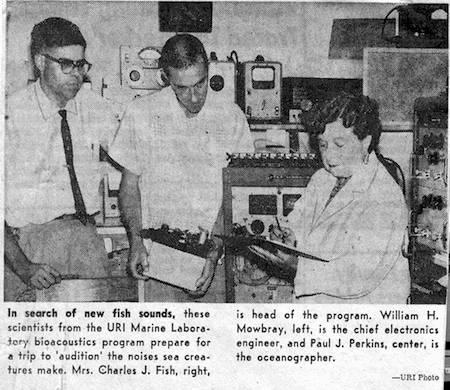Marc Abrahams's Blog, page 477
July 18, 2013
To hasten the birth of a child, apply centrifugal force [Blonsky!]
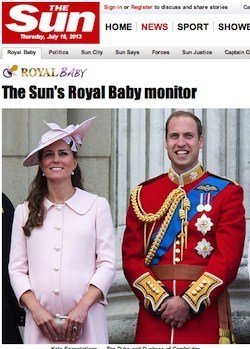 While some persons in Britain eagerly await the birth of a royal child [if you are one of those persons, see the live webcam provided by The Sun newspaper], we remind you that George and Charlotte Blonsky solved the general problem. Their patent, granted in 1965, is for a device to assist in birthing a child, by applying centrifugal force.
While some persons in Britain eagerly await the birth of a royal child [if you are one of those persons, see the live webcam provided by The Sun newspaper], we remind you that George and Charlotte Blonsky solved the general problem. Their patent, granted in 1965, is for a device to assist in birthing a child, by applying centrifugal force.
The Blonskys were posthumously awarded an Ig Nobel Prize for that, in 1999. The Ig Nobel citation says:
The late George and Charlotte Blonsky of New York City and San Jose, California, for inventing a device (US Patent #3,216,423) to aid women in giving birth — the woman is strapped onto a circular table, and the table is then rotated at high speed.
Here is a technical drawing from the Blonsky patent [to download a PDF of the entire patent, click on the image]:
NEWS: The Blonskys and there device will be honored at this year’s Ig Nobel Prize ceremony, at Harvard University on September 12, and at the Ig Informal Lectures, at MIT on September 14. The ceremony will include the premiere of a new opera about the Blonskys and their patent. The opera singers will be backed by an orchestra composed of eminent Boston area researcher/doctors, and supported by several Nobel laureates in non-singing roles. The entire event will be webcast live, worldwide.
RELATED NEWS: The Blonskys’ closest living relatives will be coming to Harvard and MIT to be part of the opera premiere.
NEWEST NEWS: We have just now learned that George Blonsky was a graduate of MIT, class of 1923 or thereabouts. We will research further detail on that. It is our hope that some part of MIT will choose to help honor the work of George Blonsky during Ig weekend, when the opera premieres and the Blonsky relatives are in town.

Viscosity in the news, twice (pitch and molasses)!
‘Midst the ebb and flow and eddies of the news, now and then people pay attention to viscosity. Today serves up two items, each of which is derived from Ig Nobel Prize-winning work.
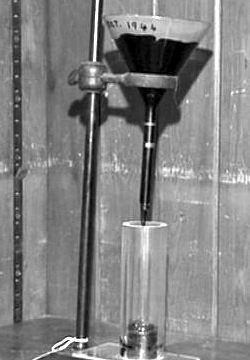 1.”Trinity College experiment succeeds after 69 years” says the headline in RTE news (which also has a video report accompanying the text) (Thanks to investigator Hugh McElveen for bringing this to our attention.):
1.”Trinity College experiment succeeds after 69 years” says the headline in RTE news (which also has a video report accompanying the text) (Thanks to investigator Hugh McElveen for bringing this to our attention.):
After decades of waiting, physicists at Trinity College have for the first time captured a rare scientific event on camera. 70 years after the experiment was set up, the scientists have videoed pitch dripping from a funnel.
The experiment was begun by a colleague of Nobel Prize winner Ernest Walton in the physics department of Trinity in 1944. Its aim was to prove that the black carbonic substance pitch is a viscous or flowing material. The experiment involved placing several lumps of pitch into a funnel and placing the funnel in a jar….
A similar experiment, begun years earlier and still running, was honored with an Ig Nobel Prize in 2005, for physics. The citation says:
John Mainstone and the late Thomas Parnell of the University of Queensland, Australia, for patiently conducting an experiment that began in the year 1927 — in which a glob of congealed black tar has been slowly, slowly dripping through a funnel, at a rate of approximately one drop every nine years. REFERENCE: “The Pitch Drop Experiment,” R. Edgeworth, B.J. Dalton and T. Parnell, European Journal of Physics, 1984, pp. 198-200.]
That same year, 2005, the Ig Nobel Prize for chemistry was awarded to:
Edward Cussler of the University of Minnesota and Brian Gettelfinger of the University of Minnesota and the University of Wisconsin, for conducting a careful experiment to settle the longstanding scientific question: can people swim faster in syrup or in water? [REFERENCE: "Will Humans Swim Faster or Slower in Syrup?" American Institute of Chemical Engineers Journal, Brian Gettelfinger and E. L. Cussler, vol. 50, no. 11, October 2004, pp. 2646-7.]
John Mainstone, Ed Cussler, and Brian Gettelfinger all attended that year’s Ig Nobel Prize ceremony, at which Nobel laureates handed them their Ig Nobel Prizes.
2. The Cussler/Gettelfinger swimming-in-syrup experiment figures in Ferris Jabr’s new essay in Scientific American, about viscosity, the Boston molasses flood, and bacteria and sperm swimming in gooey substances. Jabr’s essay itself also leads you, the reader, to other good essays:
The Science of the Great Molasses Flood
In 1919 a wave of syrup swept through the streets of Boston. Fluid dynamics explains why it was even more devastating than a typical tsunami
…I became fascinated by the idea of microbes battling viscous forces many times greater than those unleashed on Boston in 1919—forces to which most of us are oblivious. So I started researching. I called up my fellow science writer Aatish Bhatia, who had written a fascinating essay called “What it feels like for a sperm,” that I highly recommend. I looked up the transcript of Purcell’s original talk and old papers by pioneers in research on microbial movement, such as Howard Berg. And I searched the research literature for the most recent studies on how microorganisms swim.…
BONUS: A possibly live video feed from the Trinity College Dublin pitch drop experiment.

July 17, 2013
Erdos tells a joke
Mathematician Paul Erdos, he of the Erdos number, tells a joke:
Here are some Erdos links:
Reminiscences of Paul Erdos
The Erdos Number Project
Erdos and XKCD
The book of books about Erdos: The Man Who Loved Only Numbers
The documentary “Erdos — N Is a Number”:
Paul Hoffman, author of The Man Who Loved Only Numbers, talks (at the Museum of Mathematics) about his experiences with Erdos:

Giving a talk: should you read it from paper? (phallic ballerina)
When you do a talk for a group of people, should you read the words from a piece (or a stack) of paper? To read and speak, rather than simply speak, risks making the talk feel dull and stilted.
Here’s an example of reading from paper. The DanceWorkBook web site offers this description, and full video of the reading:
“The Premise: The Ballerina as Phallus
“How could a spectator possibly mistake either the graceful female sylphs of the Romantic era or the sublimely skillful technicians of the contemporary ballet stage for what amounts, on some level, to a penis? Well… let’s see: pliant, quivering, charged, emollient, stiff. Within the first few minutes of her “performed lecture,” “The Ballerina’s Phallic Pointe,” Susan Foster lets fly enough descriptives to make her case even before she presents her more convincing, and entertaining, socio-historical evidence.”
We learned about this from the Bibliolore site, which has its own thoughts on the subject of this talk.

Organizational ignorance (Towards a managerial perspective on the unknown)
 Those interested in the management of organisations may already be aware that the concept of ‘Ignorance Management’ has its own page at Wikipedia. A definition was first provided in 2012 by John Israilidis Antoniou and colleagues at Loughborough University, UK. [source]
Those interested in the management of organisations may already be aware that the concept of ‘Ignorance Management’ has its own page at Wikipedia. A definition was first provided in 2012 by John Israilidis Antoniou and colleagues at Loughborough University, UK. [source]
“Ignorance Management is a process of discovering, exploring, realising, recognising and managing ignorance outside and inside the organisation through an appropriate management process to meet current and future demands, design better policy and modify actions in order to achieve organisational objectives and sustain competitive advantage.”
Since then, new aspects of Ignorance Management have fallen under academic scrutiny. Take for example ‘Organizational Ignorance’ – which perhaps could be described as the prevalence and possible relevance of perceived (or actual) benefits/detractions of unknown factors within organizations. A new paper in the journal Management Learning (July 2013 vol. 44 no. 3) explores ‘Organizational Ignorance’ in depth. Professor Joanne Roberts, BA (Hons), PGCE, PhD, FHEA who is now at Winchester School of Art, University of Southampton, UK explains in : ‘Organizational ignorance: Towards a managerial perspective on the unknown.’
“This article aims to bring organizational ignorance to the attention of management scholars and practitioners and thereby initiate the development of a managerial perspective on the unknown. Although managing every aspect of the unknown is beyond reach, the development of an appreciation of organizational ignorance can offer a valuable means of reflecting on management issues, particularly given the bounded rationality of organizational actors in contexts characterized by ever increasing supplies of knowledge and information, growing complexity, and the need to respond quickly to opportunities and challenges. The article begins with an account of why organizational ignorance warrants attention. The nature of ignorance and organizational ignorance is then considered and a typology of organizational ignorance is presented. The article concludes with a call for the development of a managerial perspective on the unknown, together with the elaboration of research questions that can usefully direct future investigations into organizational ignorance.“
(You may purchase this article for US$32.00)
NOTES:
[1] The Wikipedia page above provides an external link to an ‘Ignorance Management benchmarking questionnaire’ which Improbable advises may be best appreciated with a pinch of salt and with one’s tongue in one’s cheek.
[2] The illustration is from the December 1939 edition of ‘Unknown‘ magazine.
ALSO SEE: The Champalimaud Centre for the Unknown, Lisbon, Portugal.

July 16, 2013
Ig Nobel tickets go on TODAY — Tuesday, July 16 at NOON
Tickets for the Twenty-Third 1st Annual Ig Nobel Prize Ceremony
go on sale TUESDAY, JULY 16, 2013, at NOON (US eastern time).
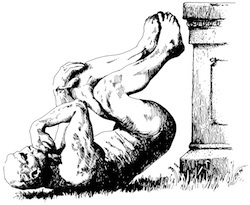 ALL the tickets will go on sale at once.
ALL the tickets will go on sale at once.
We expect that this year’s tickets will get snapped up very quickly.
TICKETS
The Harvard Box Office handles all ticket sales.
The physical ticket office, in Holyoke Center, is open some (but not all!) days from noon to 6 pm.
The web site is open 24 hours, every day.
Box Office web site,
Telephone (+1) 617-496-2222
THE CEREMONY
* Please note that this year’s ceremony
* will be a little earlier in the year than usual,
* and a little earlier in the evening than usual.
The ceremony will happen at the usual place. This year’s theme: FORCE.
WHERE: Sanders Theatre, Harvard University
WHEN: THURSDAY, SEPTEMBER 12, 2013, 6:00 pm.
Ceremony details: http://improbable.com/ig/2013/
REMINDER: If you would like us to email you a reminder each year before tickets go on sale, sign up to the Ig Nobel events reminder list: <http://five.pairlist.net/mailman/listinfo/ig-nobel-events>

Fish on Fish, fished from the files
This old newspaper clipping [the ultimate source of which we do not know] shows Fish — the famous Fish of Fish & Mowbray, authors of the book Sounds of western North Atlantic fishes; a reference file of biological underwater sounds (Fish, M.P. & Mowbray, W.H., 1970, Baltimore, MD: Johns Hopkins Press).
Fish is on the right. The clip identifies her as Mrs. Charles J. Fish. She’s better known in the fish research community as Marie Poland Fish. Because she married a Fish, she became a Fish. The Fish who married her remained a Fish; in one kind of just world, he would have become a Poland.
The New York Times wrote, upon her death in 1989:
Marie Poland Fish, an oceanographer and marine biologist whose research in underwater sound detection helped the United States Navy to distinguish schools of fish from submarines, died yesterday at the Mediplex Nursing Home in Westport, Conn. She was 88 years old and had lived for many years in Kingston, R.I.
In 1966 Dr. Fish was awarded the Navy’s Distinguished Public Service Award, its highest decoration for a civilian, for her two decades of work in bioacoustics under contract to the Office of Naval Research. Most of her work was conducted at the University of Rhode Island’s Narragansett Marine Laboratory in Kingston, which was founded by her husband, Dr. Charles Fish.
To enable antisubmarine vessels properly to identify enemy targets and avoid attacking whales or schools of smaller fish, she recorded and analyzed the sounds of more than 300 species of marine life, from mammals to mussels….

July 15, 2013
Ig Nobel tickets go on tomorrow — Tuesday, July 16
Tickets for the Twenty-Third 1st Annual Ig Nobel Prize Ceremony
will go on sale TUESDAY, JULY 16, 2013, at NOON (US eastern time).
 ALL the tickets will go on sale at once.
ALL the tickets will go on sale at once.
We expect that this year’s tickets will get snapped up very quickly.
TICKETS
The Harvard Box Office handles all ticket sales.
The physical ticket office, in Holyoke Center, is open some (but not all!) days from noon to 6 pm.
The web site is open 24 hours, every day.
Box Office web site: https://www.boxoffice.harvard.edu
Telephone (+1) 617-496-2222
THE CEREMONY
* Please note that this year’s ceremony
* will be a little earlier in the year than usual,
* and a little earlier in the evening than usual.
The ceremony will happen at the usual place. This year’s theme: FORCE.
WHERE: Sanders Theatre, Harvard University
WHEN: THURSDAY, SEPTEMBER 12, 2013, 6:00 pm.
Ceremony details: http://improbable.com/ig/2013/
REMINDER: If you would like us to email you a reminder each year before tickets go on sale, sign up to the Ig Nobel events reminder list: <http://five.pairlist.net/mailman/listinfo/ig-nobel-events>

Laughing Researchers in The Netherlands (and elsewhere)
Dr. Khiet Truong, who is a post-doctoral researcher at the Human Media Interaction (HMI) group of the University of Twente, The Netherlands, is not only one of the co-authors of the ‘Laughing Mirror‘ paper featured here recently, but is also a key figure in a number of other laughter-centric research projects. See for example : ‘On the acoustics of overlapping laughter in conversational speech.’ (In : Proceedings of Interspeech 2012, pp. 851-854.)
“The social nature of laughter invites people to laugh together. This joint vocal action often results in overlapping laughter. In this paper, we show that the acoustics of overlapping laughs are different from non-overlapping laughs…. people appear to join laughter simultaneously at a delay of approximately 500ms”
The HMI Group have also created and evaluated (at least) two software-based Laugh Detection Systems. See: ‘Automatic Detection Of Laughter’ (In: Proceedings of Interspeech 2005, Lisbon, Portugal, pp. 485-488.)
“We have shown that it is possible to automatically distinguish human laughter from speech. Laughter is only one example of paralinguistic information that can be extracted from the speech signal. In the future, we hope to use similar methods as described in this paper for automatic detection of other paralinguistic events to make classification of emotion in speech possible.”
And, a more advanced bi-modal laughter detector which uses video as well as audio data (from which the photo-compilation above is taken) ‘Decision-level Fusion for Audio-Visual Laughter Detection.’
“Laughter is a highly variable signal, which can be caused by a spectrum of emotions. This makes the automatic detection of laughter a challenging, but interesting task. We perform automatic laughter detection using audio-visual data from the AMI Meeting Corpus. Audio-visual laughter detection is performed by fusing the results of separate audio and video classifiers on the decision level. This results in laughter detection with a significantly higher AUC-ROC than single-modality classification”
(In : Proceedings of 5th Joint Workshop on Machine Learning and Multimodal Interaction, Utrecht, The Netherlands, pp. 137-148.)
BONUS: Sony’s US patent ‘Laugh detector and system and method for tracking an emotional response to a media presentation’ granted Feb. 2011.

July 14, 2013
mini-AIR July issue: Effects of blondes on drug testing
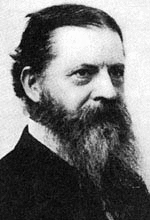 The July issue of mini-AIR (our monthly newsletter — it’s a wee little supplement to the magazine) just went out. You can read it online, too. Topics include:
The July issue of mini-AIR (our monthly newsletter — it’s a wee little supplement to the magazine) just went out. You can read it online, too. Topics include:
Effects of blondes (and blonds) on drug testing
Why redheads might have tempers
Royal Jelly Limerick Competition
and more
It also has info about upcoming events.
Mel [pictured here] says, “It’s swell.”
mini-AIR is the simplest way to keep informed about Improbable and Ig Nobel news and events. Just add yourself to the mini-AIR list, and mini-AIR will be emailed to you every month.

Marc Abrahams's Blog
- Marc Abrahams's profile
- 14 followers


